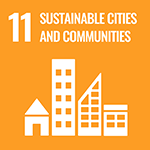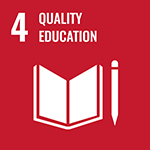Hazard Assessment of Large Earthquakes and Tsunamis in the Mexican Pacific Coast for Disaster Mitigation
Principal Investigator


Dr.
Instituto de Geofísica, Universidad Nacional Autónoma de México (UNAM)
Victor Manuel Cruz Atienza
ODA Recipient Country
United Mexican States
Research Institutions in Japan
Kyoto University / The university of Tokyo / Tohoku University / Kobe University
Research Institutions in Counterpart Country
IInstituto de Geofísica / Universidad Nacional Autónoma de México (UNAM) / Centro Nacional de Prevención de Desastres (CENAPRED)
Adoption fiscal year
FY 2015
Research Period
5 Years
Overview of the Research Project
Forecasting the size of future megathrust earthquakes and tsunamis by exploiting the new technology of offshore and onshore geophysical observations.
We aim to assess the potential for megathrust earthquakes in the coastal region of the Guerrero state by establishing the first Mexican seafloor geodetic and seismic network to obtain slow earthquake data. After analyzing the onshore data as well as the landward data, such as onshore GNSS* stations and seismic stations, we will develop scenarios for the earthquake and tsunami hazard, an earthquake/tsunami hazard map, and a tsunami evacuation sign to aid in safely evacuating the residents. The development of disaster education programs will help mitigate disasters with the inclusion of Mexican cultural perspectives and actions to be taken. *GNSS: Global Navigation Satellite System
Utilization of the new knowledge on slow earthquakes to mitigate the disasters from future megathrust earthquakes and tsunamis
Understanding the similarities and differences between slow and megathrust earthquakes in Japan and Mexico will contribute greatly to understanding the fundamental physics of megathrust earthquakes and tsunamis in Japan’s Nankai Trough region as well as the Mexican subduction zone. Furthermore, initiatives aimed at mitigating damage in the event of a megathrust earthquake will aid in the sustainable development of Japanese society by ensuring the lives and belongings of citizens are protected in the event of a future megathrust earthquake centered in western Japan.
Photo gallery
Research Project Web site
Press Release
Links
Projects
Contact Us
Japan Science and Technology Agency (JST)
Department of International Affairs
SATREPS Group
TEL : +81-3-5214-8085
Related articles by Category
- Disaster Prevention and Mitigation
Disaster Prevention and Mitigation

 Kingdom of Tonga
Kingdom of Tonga
Volcanic island nations working together to reduce the risk of eruption and tsunami disasters!
Disaster Risk Reduction of Widespread Volcanic Hazards in Southwest Pacific Countries
- Mexico
Disaster Prevention and Mitigation

 Republic of El Salvador
Republic of El Salvador
Protecting international port cities from compound disasters with dominostyle chains of destruction!
Compound Disaster Risk Reduction associated with Large Earthquakes and Tsunamis
- Latin America
Bioresources

 Republic of Peru
Republic of Peru
Stop the invasion and spread of banana wilt from threatening the banana industry!
Establishment of an Alert System for Fusarium oxysporum f. sp. cubense, the Banana and Plantain Wilt Pathogen, and Mitigation Strategy of the Disease
- SDGs : Goal.11
Disaster Prevention and Mitigation

 Republic of Turkey
Republic of Turkey
Use disaster mitigation science to reduce the damage from massive active-fault earthquakes!
Establishment of a Research and Education Complex for Developing Disaster-resilient Societies - MARTEST


























